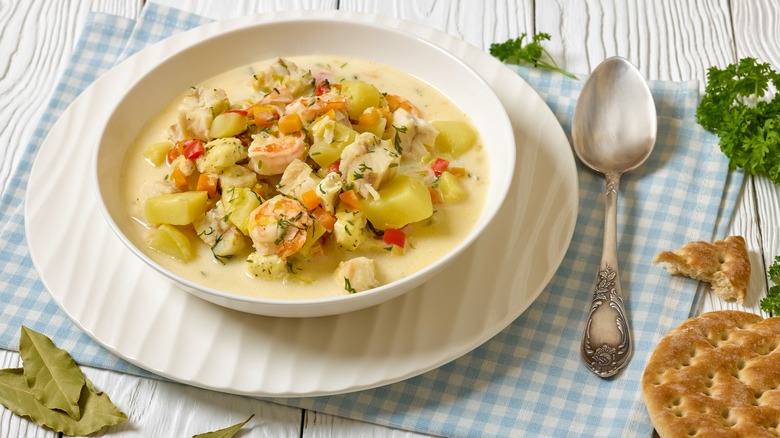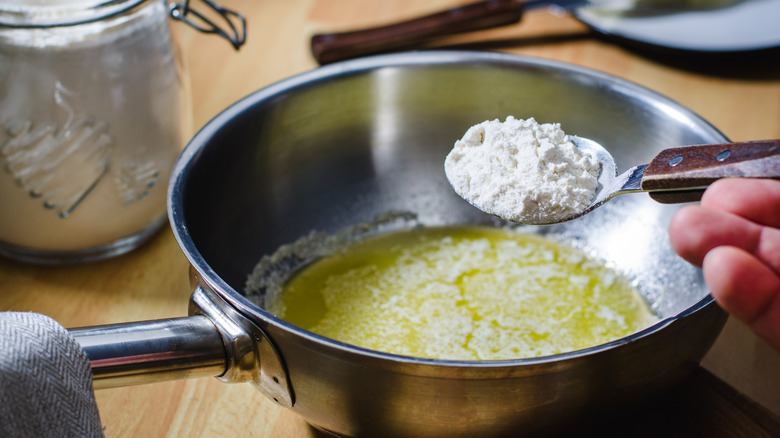Why Your Fish Chowder Is Too Thin And How To Thicken It
After preparing what you believe is a hearty, creamy, soul-stirring bowl of fish chowder, "too watery" is the last description you want to hear from dinner guests as a home cook. Staying up half the night, you roll the recipe over and over in your mind, trying to figure out where it went wrong. It may help you sleep to know there could have been several reasons why your fish chowder was too thin, and quite a few ways, both classic and unconventional, to remedy it.
The simplest reason why your fish chowder came out too thin is because you added too much water. It could be due to an inaccurate recipe, too few potatoes, or a heavy hand. Another possibility is using improperly thawed frozen fish. While frozen fish is perfect for an excellent chowder, and can even be superior to fresh fish, if it's not properly thawed and patted dry, the moisture or "glazing" used to pack and freeze the fish will seep out into the stew during cooking. Finally, another explanation for watery chowder could be that it wasn't thickened.
How to thicken fish chowder
Chock full of potatoes, butter, and cream, many fish chowder recipes don't call for thickening — but there are always variations. For example, if you use waxy potatoes instead of starchy potatoes, there won't be extra starch to help thicken the soup. But regardless of the type of potato, after they are tender you can smash a few against the side of the pot to help thicken the chowder. Another thickening hack calls for instant mashed potatoes, Jacques Pépin's secret to banishing watery soups. Simply stir in a couple of tablespoons at the end of the cooking process.
Using a roux or a slurry are two of the most common ways to thicken soups and stews. For a roux, you can add a tablespoon or two of flour to the butter while sauteing your onions, or you can add a premade blonde roux to a simmering soup. Another method similar to a roux is called a beurre manie (French for "kneaded butter"), which is equal parts softened butter and all purpose flour blended together and slowly whisked into a simmering soup or stew.
Quite often, home cooks and professional chefs will use a slurry, a mixture of a starch (like cornstarch, potato starch, or flour) and water that is stirred into the hot chowder. Using clam juice or even oyster liquor (if you have it) instead of water for your slurry will amplify the rich seafood flavor of your chowder. Lastly, don't skimp on the heavy cream and butter! They're the most flavorful thickeners in your chowder-making arsenal.

